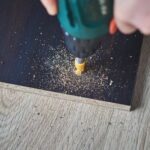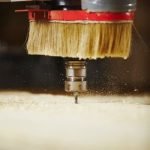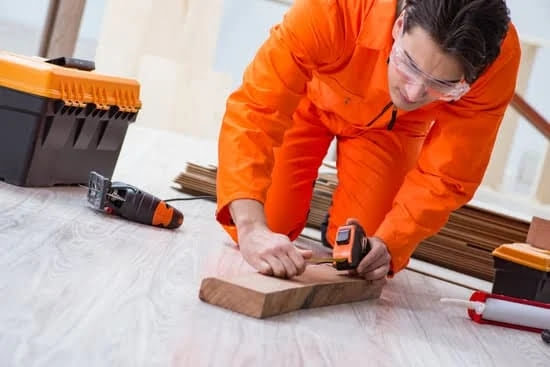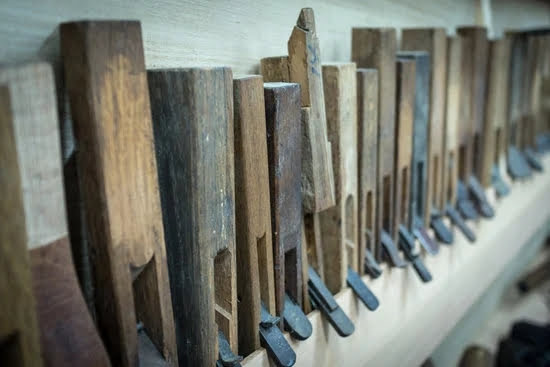What is intarsia woodworking? Intarsia woodworking is a distinct form of woodworking that involves creating intricate designs and pictures using different types and colors of wood. This art form has been around for centuries and requires patience, precision, and creativity to master. In this article, we will explore the fascinating world of intarsia woodworking, from its history to the tools and techniques needed to create stunning woodwork pieces.
Intarsia woodworking has a rich history that dates back to ancient times, with its origins traced back to the ancient Egyptians. Over time, this woodworking technique has evolved and gained popularity in various cultures around the world. From geometric patterns to elaborate landscapes, intarsia woodworking allows artists and woodworkers to showcase their craftsmanship and attention to detail through the use of different wood species.
To delve into the world of intarsia woodworking, it is essential to understand the tools and materials needed for this craft. From choosing the right types of wood to selecting the necessary saws, carving tools, and finishing supplies, embarking on an intarsia project requires careful consideration of these elements. Whether you are a seasoned woodworker or a beginner looking to explore a new art form, understanding the essential tools and materials for intarsia woodworking is crucial in achieving beautiful results.
History of Intarsia Woodworking
The history of intarsia woodworking can be traced back to ancient times, with evidence of this intricate woodworking technique found in Egyptian tombs and ancient Roman and Greek art. The art of intarsia reached its peak during the Renaissance period in Italy, where it was used to create stunning and elaborate wood inlay designs on furniture, sculpture, and wall panels.
During this time, intarsia was considered a symbol of wealth and luxury, with skilled craftsmen creating exquisite masterpieces that showcased their expertise.
Intarsia woodworking has evolved over the centuries, with new tools and techniques developed to enhance the craft. In the past, intarsia pieces were created using simple hand tools such as chisels, knives, and saws. Today, modern woodworkers use power tools such as scroll saws and sanders to create more intricate and detailed designs. Additionally, advancements in adhesives have made it easier to assemble multiple pieces of wood into a seamless design.
One of the most famous examples of intarsia woodworking is the Studiolo of Gubbio created by Italian craftsman Giuliano da Maiano in the 15th century. This impressive room features elaborate wood inlay panels depicting mythological scenes and architectural elements. The historical significance of intarsia woodworking continues to inspire contemporary artisans to preserve this traditional craft while integrating modern techniques and designs.
Tools and Materials Needed for Intarsia Woodworking
Intarsia woodworking is a beautiful and intricate art form that involves creating stunning images and designs using different types and colors of wood. To create these breathtaking pieces, there are several tools and materials that are essential.
One of the most important tools for intarsia woodworking is the scroll saw. This saw allows for intricate and precise cuts in the wood, making it possible to create detailed designs. Additionally, a variety of small hand tools such as chisels, sanders, and clamps are necessary for refining and assembling the individual pieces of wood.
In terms of materials, a wide selection of wood in different colors and grain patterns is crucial for creating dynamic and visually appealing intarsia pieces. Many intarsia artists use natural woods such as maple, oak, walnut, cherry, and cedar to achieve various hues and textures in their work. Stains and finishes are also essential to enhance the natural beauty of the wood and provide protection to the finished piece.
Aside from tools and materials, patience, precision, and creativity are also essential for successful intarsia woodworking. With dedication and practice, anyone can learn this captivating woodworking technique.
The Process of Creating Intarsia Woodwork
One of the key aspects of intarsia woodworking is the careful selection and cutting of different types of wood. Each piece of wood is carefully shaped and fitted together like a puzzle to create a seamless design. The process involves cutting, shaping, sanding, and fitting each piece together to create a cohesive image or pattern.
One of the most important tools in intarsia woodworking is the scroll saw, which allows for intricate and detailed cuts in the wood. In addition to the scroll saw, other tools such as chisels, sanders, and carving knives are used to shape and refine the individual pieces of wood. Patience and attention to detail are essential in this process as even the smallest mistake can affect the overall design.
| Intarsia Woodwork Process | Details |
|---|---|
| Wood Selection | Careful selection and cutting of different types of wood |
| Tool Importance | Use of scroll saw, chisels, sanders, carving knives for shaping and refining pieces |
| Precision Required | Patience and attention to detail essential for achieving desired results |
Types of Wood Used in Intarsia Woodworking
When it comes to creating stunning and intricate pieces of intarsia woodworking, the choice of wood is crucial. Different types of wood can provide varying colors, textures, and grain patterns that add to the overall beauty and detail of the finished piece. Understanding the characteristics of different woods will help you create a visually striking and harmonious composition in your intarsia woodworking projects.
Hardwood vs Softwood
In intarsia woodworking, both hardwood and softwood can be used depending on the desired effect. Hardwoods such as oak, maple, cherry, walnut, and mahogany are popular choices for their durability, rich colors, and beautiful grain patterns. Softwoods like pine, cedar, and spruce are also used for their lighter color and ease of carving. Understanding the differences between these two categories of wood will allow you to make informed decisions based on the specific requirements of your project.
Exotic Woods
Exotic woods are another option for adding unique characteristics to your intarsia woodworking projects. These woods often have distinct colors and grain patterns that can make a piece truly stand out. Examples of exotic woods commonly used in intarsia include ebony, padauk, purpleheart, zebrawood, and bloodwood. However, it’s important to consider the cost and sustainability of exotic woods when selecting them for your projects.
Combining Different Woods
One of the distinctive features of intarsia woodworking is the ability to combine different types of wood to create intricate designs with contrasting colors and textures. By strategically mixing various woods within a single project, you can achieve captivating visual effects that enhance the overall aesthetic appeal. Experimenting with different combinations will allow you to unleash your creativity while producing stunning results in your intarsia woodworking endeavors.
Understanding how different types of wood can be used in intarsia woodworking is essential for creating visually appealing pieces that showcase depth and dimensionality through color and texture variations. Whether you choose hardwoods for their rich colors or opt for exotic woods to add uniqueness to your projects, the type of wood you select plays a significant role in bringing your intarsia creations to life.
Tips and Techniques for Beginners in Intarsia Woodworking
Intarsia woodworking is a beautiful and intricate art form that involves creating images or patterns using pieces of wood of different shapes, sizes, and colors. For beginners looking to try their hand at this craft, there are some essential tips and techniques to keep in mind.
Start With Simple Patterns
When starting out in intarsia woodworking, it’s best to begin with simple patterns and designs. This will help you understand the basic techniques involved in cutting, shaping, and fitting the wooden pieces together. As you gain more experience and confidence, you can then move on to more intricate and detailed projects.
Invest in Quality Tools
Having the right tools is crucial for successful intarsia woodworking. Some essential tools include a scroll saw for cutting the wooden pieces, sandpaper for smoothing rough edges, and clamps for holding pieces together during assembly. Investing in quality tools will make the process smoother and more enjoyable.
Pay Attention to Wood Grain and Color
One of the most important aspects of intarsia woodworking is working with different types of wood to create contrast and dimension in your projects. Pay attention to the natural grain and color variations in the wood as you select and arrange pieces for your design. This will enhance the visual impact of your finished piece.
As you delve into the world of intarsia woodworking, remember that practice makes perfect. With patience, dedication, and a willingness to learn from your mistakes, you can develop your skills and create stunning works of art through this timeless craft.
Common Mistakes to Avoid in Intarsia Woodworking
When it comes to intarsia woodworking, there are several common mistakes that beginners should be aware of in order to create successful and beautiful pieces. By understanding and avoiding these pitfalls, woodworkers can improve the quality of their work and enjoy the process of intarsia woodworking even more.
Here are some common mistakes to avoid when practicing intarsia woodworking:
- Choosing the wrong type of wood: Using the wrong type of wood can result in a lackluster finished product. It’s important to select the appropriate woods for your project, taking into account factors such as color, grain pattern, and hardness.
- Poor pattern selection: Selecting a pattern that is too complex or intricate for your skill level can lead to frustration and disappointment. It’s essential to choose patterns that match your abilities and gradually work up to more challenging designs.
- Not paying attention to grain direction: Neglecting to consider the direction of the wood grain when cutting and assembling pieces can result in an uneven appearance. It’s crucial to pay attention to the grain direction to ensure a cohesive and harmonious final product.
By avoiding these common mistakes, woodworkers can elevate their intarsia woodworking skills and create stunning pieces that showcase craftsmanship and artistry. Whether you’re a seasoned woodworker or just starting out, being mindful of these potential pitfalls can make all the difference in your intarsia woodworking projects.
Remember, no matter how experienced you become in this craft, it’s always important to take your time with each step of the process and constantly seek ways for improving your skills. With patience, practice, and attention to detail, you can create beautiful intarsia woodwork that you can be proud of.
Inspiration and Ideas for Intarsia Woodworking Projects
Intarsia woodworking is a beautiful and intricate art form that allows woodworkers to create stunning images using various types and shades of wood. The process involves fitting together different pieces of wood to form a picture or pattern, making it a unique form of woodworking. Whether you are new to intarsia woodworking or have been practicing for years, finding inspiration and ideas for projects is essential to keep your creativity flowing.
Here are some sources of inspiration and ideas for your next intarsia woodworking project:
- Nature: From animals and plants to landscapes and seascapes, nature offers an endless supply of inspiration for intarsia woodworking. Consider creating a majestic eagle in flight, a serene forest scene, or a vibrant bouquet of flowers.
- Art and Culture: Draw inspiration from famous paintings, cultural symbols, or traditional designs. You can recreate iconic artworks in wood or incorporate elements from different cultures into your intarsia pieces.
- Custom Patterns: If you have a particular image or pattern in mind, you can create custom designs for your intarsia projects. Use software programs or online resources to convert images into patterns that can be translated into wood.
- Personal Interests: Reflect your hobbies, interests, or personal experiences in your intarsia woodworking. Whether it’s a beloved pet, a favorite sports team logo, or a memorable travel destination, incorporating personal elements into your projects adds meaning and significance.
These sources of inspiration can help you kick-start your creativity and generate ideas for compelling intarsia woodworking projects. Remember that the possibilities are endless when it comes to this art form, so don’t hesitate to explore new themes and designs in your work. What is intarsia woodworking if not an opportunity to unleash your imagination through the natural beauty of wood?
Benefits and Challenges of Intarsia Woodworking
Intarsia woodworking is a beautiful and intricate form of wood art that involves creating images and designs by carefully fitting together different types and colors of wood. As with any craft, there are both benefits and challenges to practicing intarsia woodworking.
One of the key benefits of intarsia woodworking is the opportunity for artistic expression. By using various types of wood with different grains and colors, woodworkers can create stunning pieces that showcase their creativity and skill. Additionally, the finished products are often unique and eye-catching, making them a popular choice for home decor or gifts.
However, there are also several challenges that come with intarsia woodworking. One such challenge is the precision required to cut, shape, and fit together each piece of wood to create the desired design. This process can be time-consuming and may require patience and practice to perfect. Additionally, sourcing high-quality wood in a variety of colors can be expensive and may require some trial and error to find the right materials for a specific project.
Despite these challenges, many woodworkers find great satisfaction in mastering the art of intarsia woodworking. The process allows for endless creativity and experimentation with different woods, shapes, and designs, making it a rewarding hobby for those who are willing to put in the time and effort to learn this unique craft. Whether creating intricate wall hangings or decorative tabletop pieces, intarsia woodworking offers a one-of-a-kind way to showcase talent and creativity through the use of natural materials.
Conclusion
In conclusion, the art of intarsia woodworking is a beautiful and intricate form of woodworking that has a rich history and requires patience, precision, and skill. From its origins in ancient times to its continued popularity today, intarsia woodworking continues to inspire woodworkers to create stunning pieces of art using various types of woods and techniques.
The process of creating intarsia woodwork involves carefully selecting and cutting different types of wood to create a mosaic-like design. This meticulous process results in stunning images and patterns that showcase the natural beauty of the wood. Whether it’s a small decorative piece or a larger project such as a wall hanging or furniture, intarsia woodworking allows for endless possibilities for creativity and expression.
While intarsia woodworking may pose some challenges, such as selecting the right types of wood and mastering the technique of fitting pieces together seamlessly, the end result is truly rewarding. The beauty and artistry of intarsia woodworking can be appreciated by both beginners and experienced woodworkers alike, making it a timeless craft that continues to captivate enthusiasts around the world.
So next time you’re looking for a new woodworking project to tackle, consider trying your hand at the captivating world of intarsia woodworking.
Frequently Asked Questions
What Is the Intarsia Technique in Woodworking?
The intarsia technique in woodworking involves cutting and fitting together different shapes, sizes, and species of wood to create intricate patterns or pictures. This technique is often compared to marquetry, but intarsia uses solid pieces of wood rather than veneer.
What Is Intarsia Used For?
Intarsia is commonly used for creating decorative panels, furniture inlays, jewelry boxes, and other artistic woodworking projects. It allows for the incorporation of a wide range of colors and textures to produce detailed images or designs in wood.
What Tools Are Needed for Intarsia?
The tools needed for intarsia typically include a scroll saw for cutting out the individual wood pieces, sandpaper for smoothing the edges, a coping saw for finer details, along with various clamps and adhesives to assemble the pieces together. Additionally, woodworkers may also use chisels, carving knives, and other fine detailing tools as needed in their projects.

Hi everyone! I’m a woodworker and blogger, and this is my woodworking blog. In my blog, I share tips and tricks for woodworkers of all skill levels, as well as project ideas that you can try yourself.





